
When Wild Fashion Took to the Skies
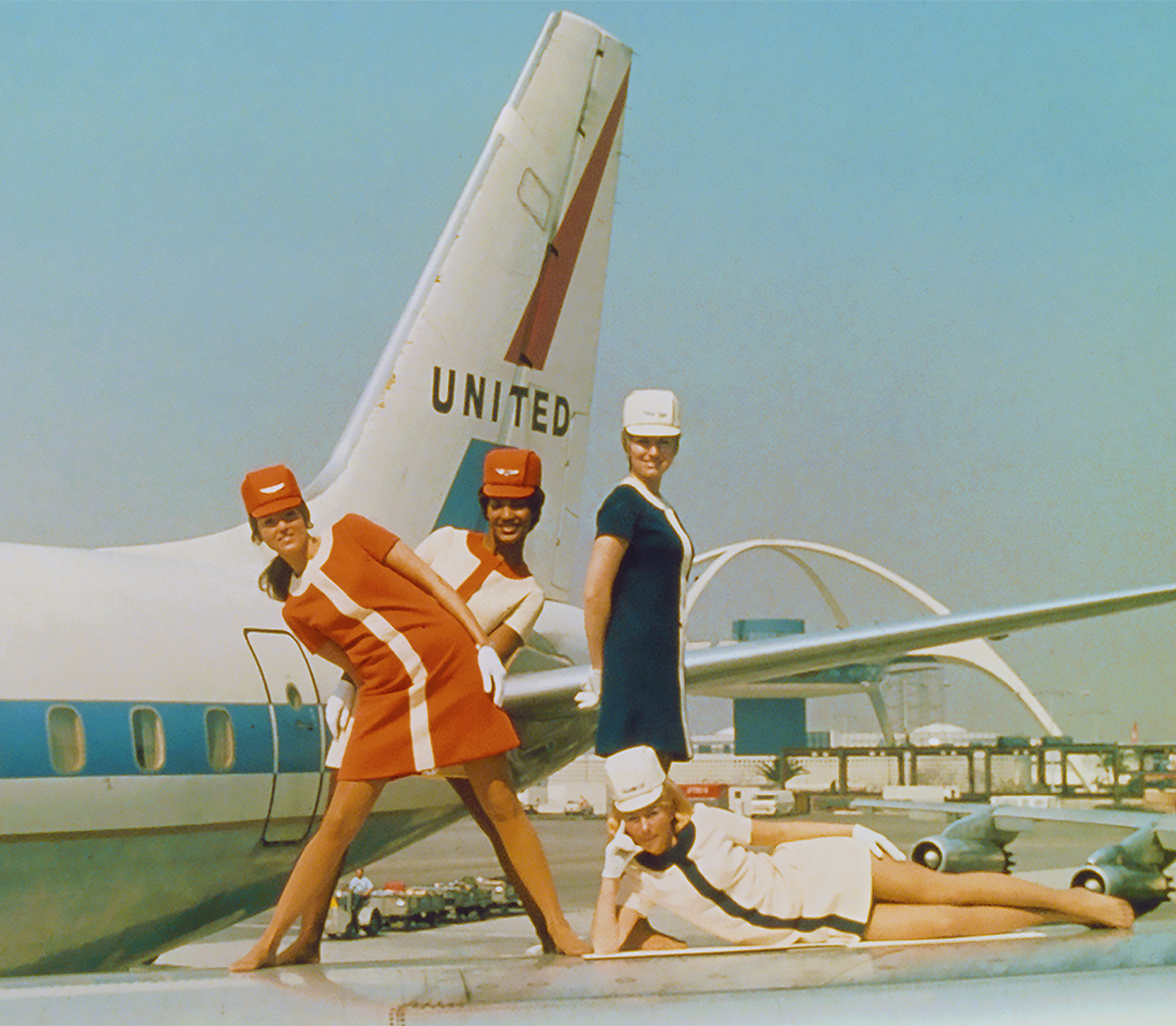 |
Grueling 12-hour trans-oceanic flights, flirty men in their reclining seats, bawling youngsters, flight delays – and this was when people still smoked on planes. No, it wasn’t easy being a flight attendant back in the ‘60s and ‘70s, when virtually all of them were women and their looks were crucially important.
Airlines did offer this benefit though – they clothed their attendants in sturdy and devilishly stylish garments by such haute couture masters as Emilio Pucci, a favorite of Marilyn Monroe and Jackie Kennedy; and Jean Louis, whose clientele included both Hollywood stars and Hollywood studios.
The 1960s ushered in both the Jet Age and the Space Age, and the airlines knew they had to get with it. The more staid, at times gently militaristic looks of the ‘40s and ‘50s would no longer do.
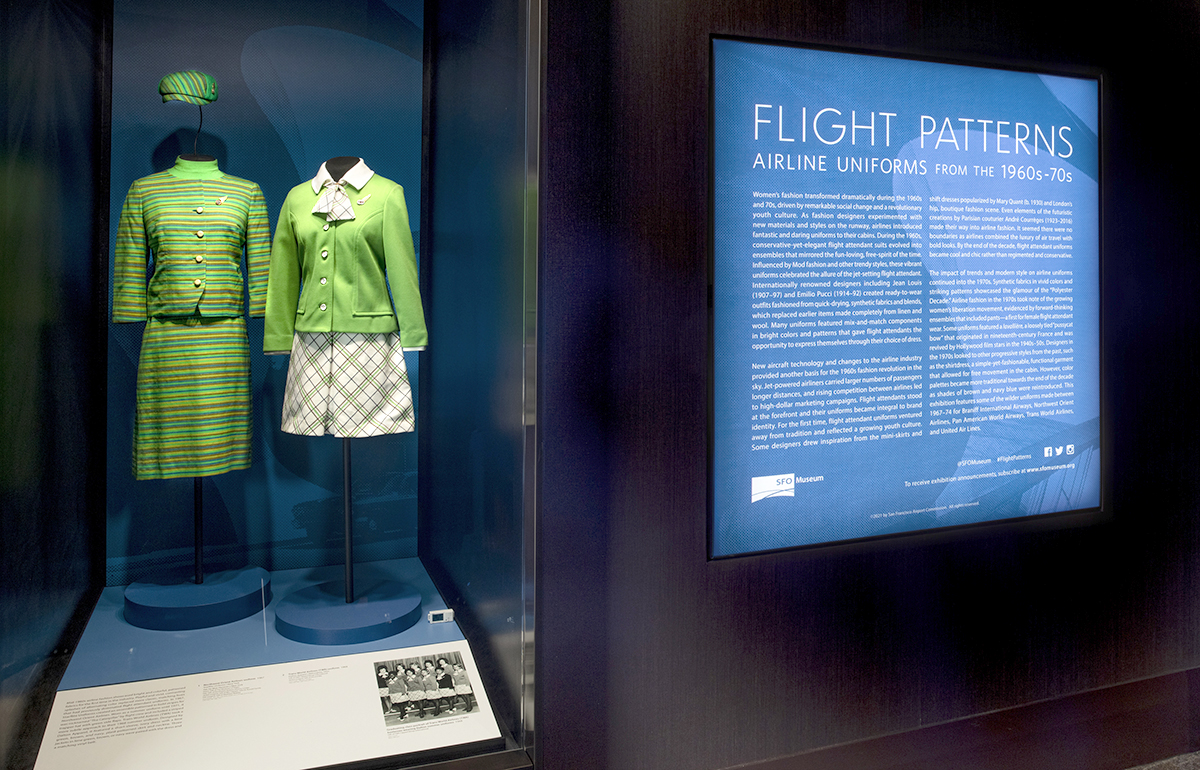 |
To most easily see ‘Flight Patterns -- Airline Uniforms from the 1960s–70s,’ a marvelous little exhibit of 19 uniforms at Harvey Milk Terminal 1 at San Francisco International Airport, you may have to take to the sky yourself, as the show is in the area reserved for ticketed passengers.
(Private tours can be arranged for non-travelers, scheduled at least a week in advance during normal, weekday business hours. Request a tour by mailing [email protected].)
The exhibit put on by the SFO Museum, which has more than two dozen galleries throughout the airport, remains up till March 13, 2022.
“The exhibition features some of the wilder uniforms made between 1967-'74 for Braniff International Airways, Northwest Orient Airlines, Pan American World Airways, Trans World Airlines, and United Air Lines.”
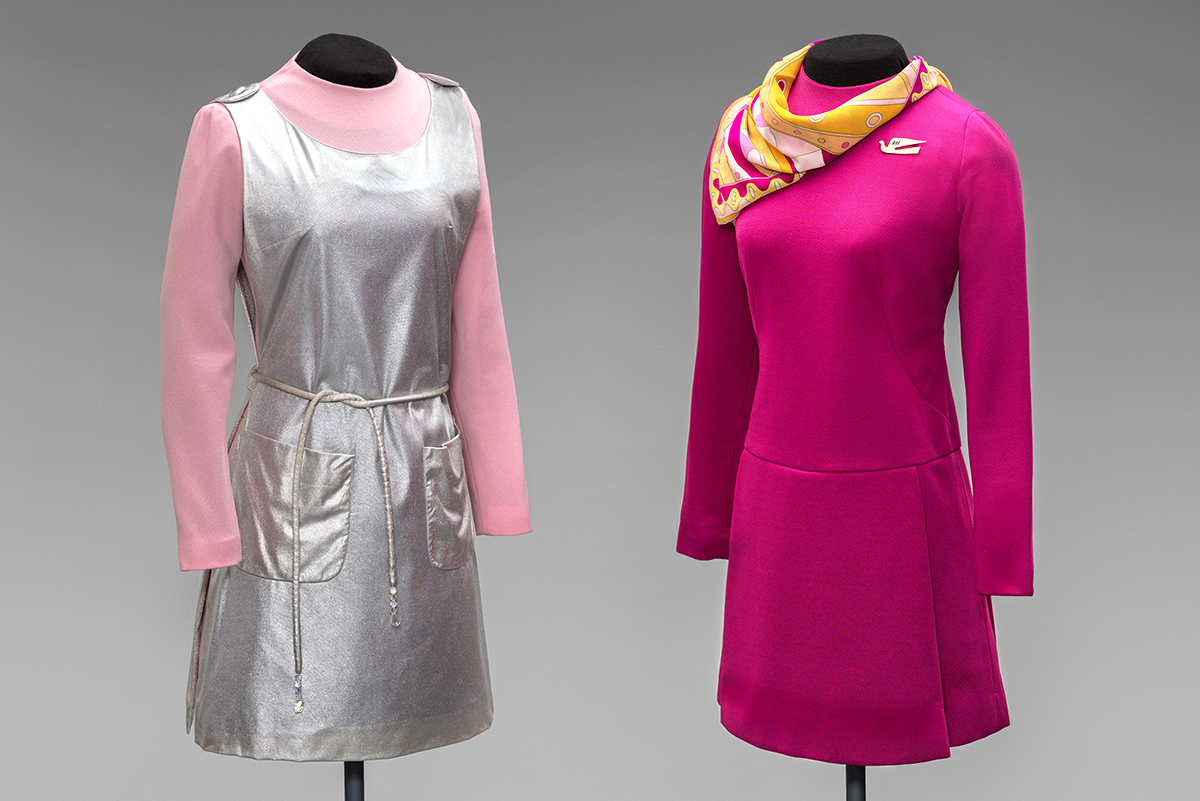 |
“As fashion designers experimented with new materials and styles on the runway, airlines introduced fantastic and daring flight attendant uniforms to their cabins,” the museum writes. “During the 1960s, conservative-yet-elegant flight attendant suits evolved into ensembles that mirrored the fun-loving free spirit of the time. Influenced by Mod fashion and other trendy styles, these vibrant uniforms celebrated the allure of the jet-setting flight attendant.”
The exhibit space is brand new, says curator Dan Calderon, while leading a one-man tour. “I was tasked with essentially coming up with something bold and bright that would introduce the new gallery.”
“We settled on the idea of showing flight attendant uniforms from the mid-'60s through the mid-‘70s simply because it was a real shift [in look],” Calderon says. “Suddenly the flight attendant uniforms represent more of a free spirit of the '60s youth culture trends, modern style. All of these things are starting to make their way into airline cabins in a wonderfully colored and bold manner. So we couldn't think of anything better from our collection.”
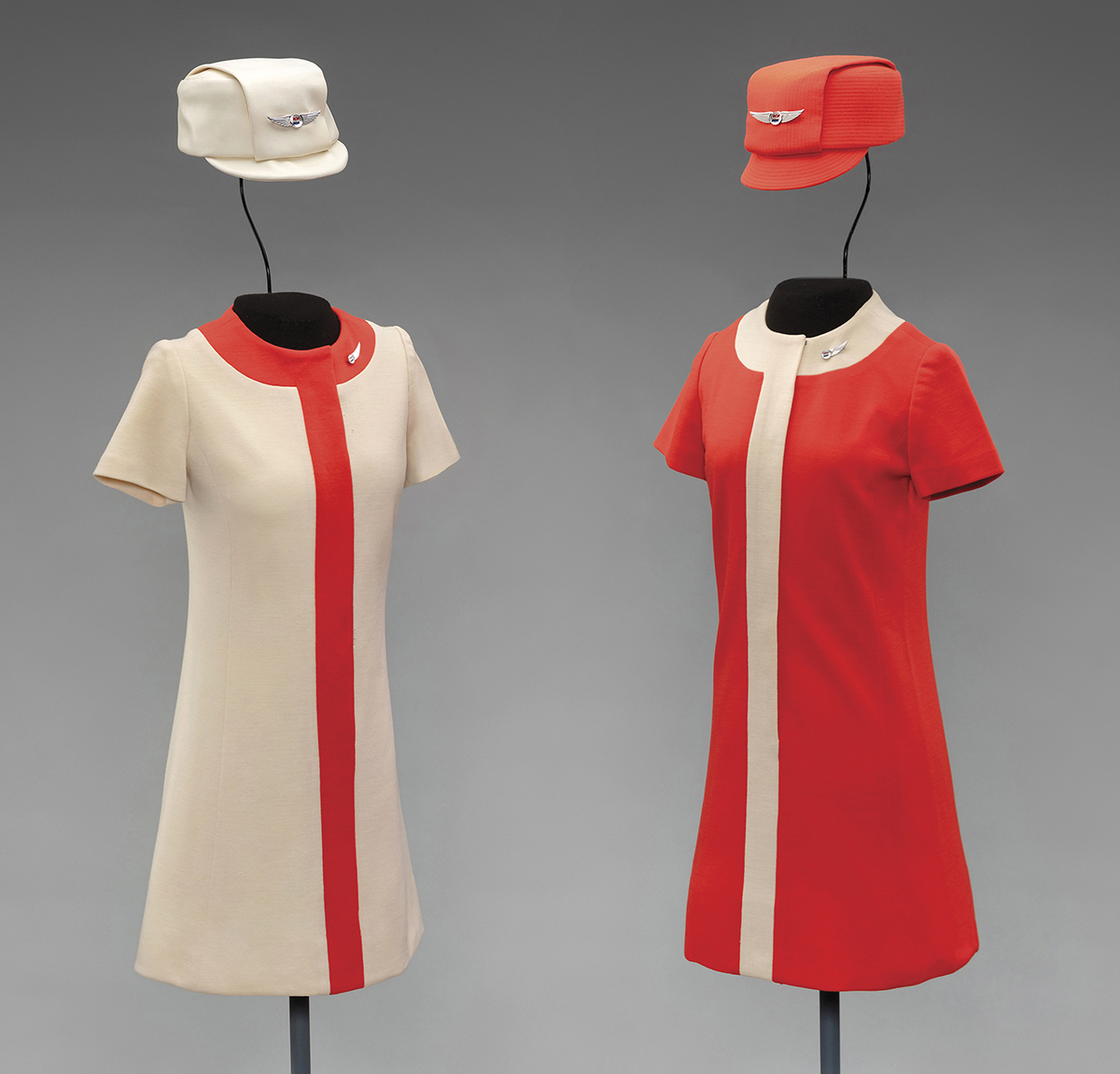 |
“As people were starting to travel more in the mid-‘60s,” he says, “you got the jet-powered airliners that are taking more passengers faster and farther away. Ticket prices are starting to come down a little bit. And you've got real competition for the first time in the airline industry, real serious competition. And part of the way that the airlines were trying to separate themselves and brand themselves was through airline uniforms.”
Consider Pan Am’s 1969 “uniform for the superjet era,” complete with A-line dress or flared skirt in “superjet blue” or “galaxy gold,” and a Borsalino hat. Pan Am, a foundational airline that pioneered flying boats, had taken a conservative approach to fashion, till dipping its toes into couture.
“When these came out, Pan Am stewardesses were just over the moon,” Calderon says. “They were so excited to finally have something that was really stylish.”
Or how about the 1968 'Classic Collection' fashion legend Emilio Pucci produced for Braniff? Very functional, with an apron for ease of serving food and drink, and in cool shades of light and deep pink. “That was crazy Space Age,” Calderon says.
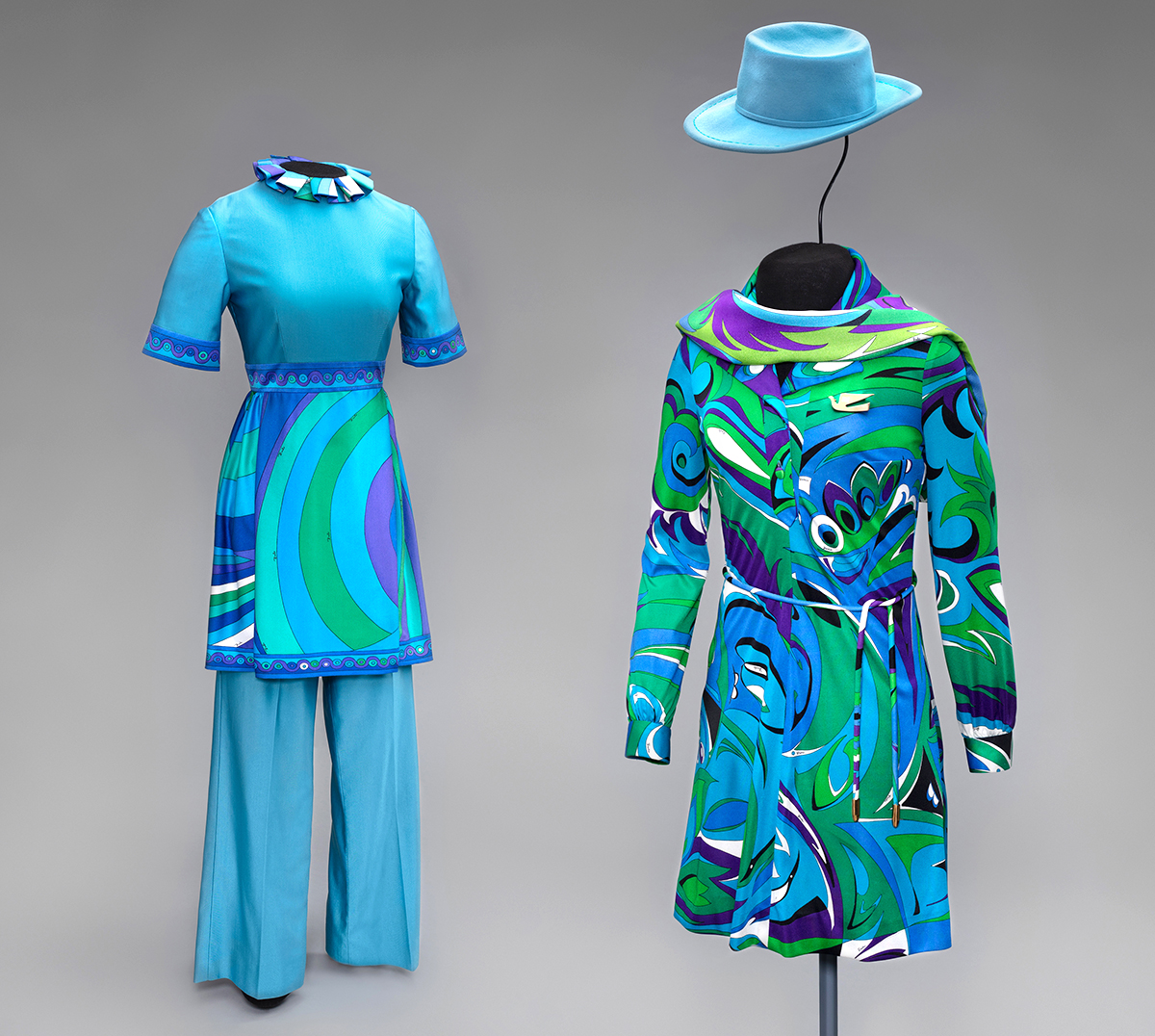 |
It was also the age of women’s liberation and Civil Rights. Young, Black women were joining flight crews, as were women from other ethnicities. Men were finally starting to arrive too – but not before women in flight began wearing pants.
“During this era, you're seeing pants as well, which was very, very progressive for women to wear pants with a company uniform,” Calderon says. “And that's very indicative of 1970s women’s liberation.”
About the Pucci designs, Calderon says, “Very, very colorful, very vibrant, but also indicative of the times.”
Among Calderon’s favorite garments in the show is a rarity from 1967 that is resplendent in green. It’s a jacket, skirt, and turtleneck set, complete with jaunty hat, a composition of tightly arrayed horizontals in yellow, blue, and turquoise.
“The Northwest crew called it the Caterpillar,” he says. “It was Northwest’s attempt at being a little trendy, and, boy, I'm not quite sure how to describe it. I think it's just great.”
To learn more about the airline fashion, take a look at this catalog from the SFO Museum exhibit 'Fashion in Flight' from 2020.
- ‹ previous
- 641 of 677
- next ›



